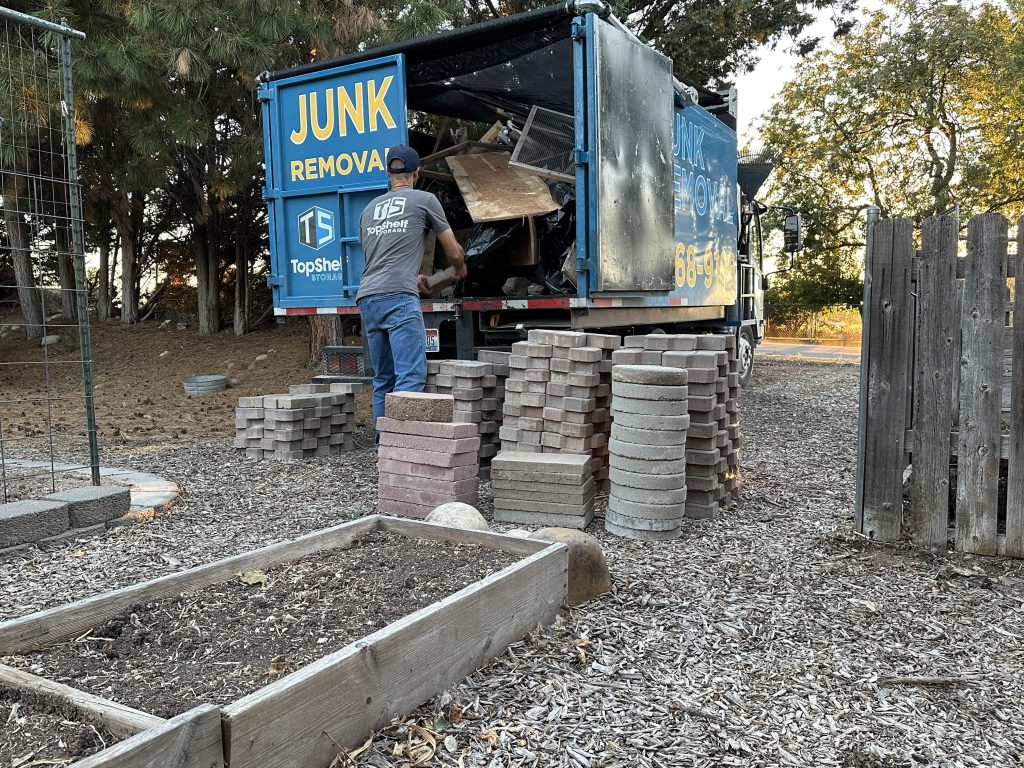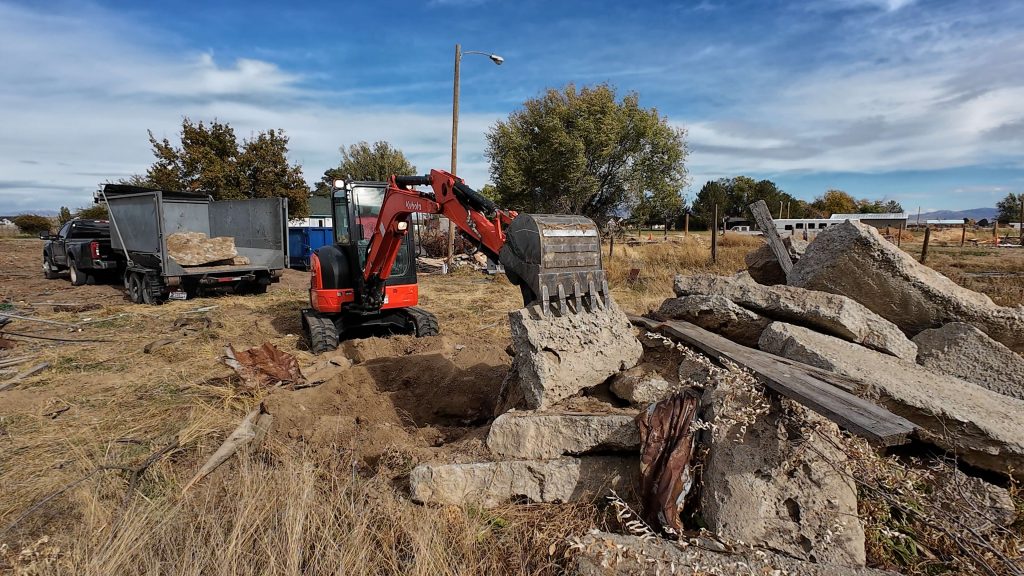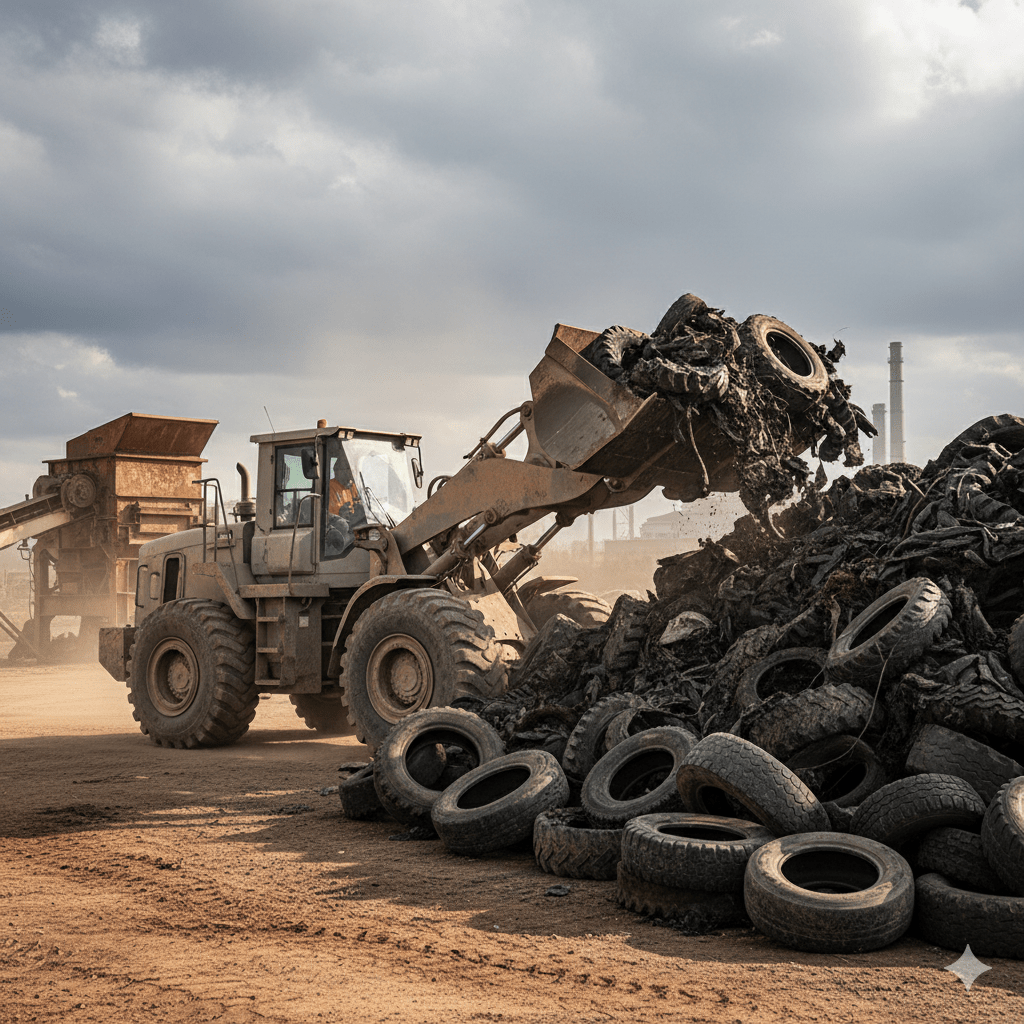There’s nothing romantic about concrete. It doesn’t age gracefully. It doesn’t whisper sweet nothings under your feet. It cracks, it heaves, it stains, and eventually—it has to go.
Maybe it’s the old patio that’s more patch than slab. Maybe it’s a broken walkway with trip hazards for days. Maybe it’s your garage floor, collapsing under the emotional weight of your SUV. Either way, when the cracks outnumber the solid bits, it’s time to call it: you need concrete demolition.
Not a patch. Not a coat of epoxy. A breakup. A total, dust-spewing, slab-shattering goodbye.
When Does Concrete Need to Be Demolished?
Let’s be clear—this isn’t about vanity. It’s about function and safety. You don’t demolish concrete because you’re bored. You do it because the relationship has become toxic.
Signs you need slab removal:
- Major Cracks or Shifting: If it looks like tectonic plates are forming in your driveway, you’re past the point of repair.
- Drainage Problems: Concrete that slopes the wrong way will funnel water into your foundation faster than a leaky gutter in a thunderstorm.
- Tree Root Uplift: That “natural aesthetic” your neighbor keeps commenting on? It’s roots. And it’s bad.
- Settlement or Sinking: If one corner has dropped 3 inches and the rest hasn’t noticed yet, it’s only a matter of time.
- Embedded Rebar Corrosion: Rust doesn’t sleep. When the steel inside starts to rot, the slab starts to crumble.
Sometimes, you inherit someone else’s concrete problem (hello, previous homeowners), and sometimes time just wins. Either way, concrete demolition and removal is often the only option left.
Equipment Used in Concrete Demolition
This isn’t a hammer-and-chisel job unless you hate yourself. Demolishing concrete is loud, dusty, and delightfully violent—but only if you’ve got the right toys.
Basic Tools for Small Jobs:
- Sledgehammer (15–20 lbs if you mean business)
- Pickaxe or mattock
- Wheelbarrow
- Pry bar
Power Tools and Machinery:
- Jackhammers: Electric or pneumatic. Great for patios, walkways, or thin driveways. Not great for your ears.
- Skid-Steer Loaders or Bobcats: For hauling chunks and tearing out larger sections.
- Excavators with Hydraulic Breakers: If your slab is thick, rebar-reinforced, or just a stubborn SOB.
- Cut-off Saws: For controlled cuts around plumbing or structures.
Any legit concrete demolition company will show up with this gear locked and loaded. If someone rolls up with a wheelbarrow and vibes, send them back to Craigslist.

Cost Factors for Concrete Removal
Let’s talk about the part that makes people nervous: the bill. Concrete demolition cost depends on a handful of things, none of which are optional if you want the job done right.
| Factor | Impact on Cost |
|---|---|
| Thickness | Thicker slabs = more work, more cost |
| Reinforcement | Rebar or mesh makes it harder to break |
| Access | Tight spaces need smaller tools and more labor |
| Hauling | Debris disposal isn’t free (and it adds up fast) |
| Location | Local landfill rates, permits, and labor costs vary |
Average Costs:
- Basic slab removal (patios, small walkways): $500–$1,500
- Driveway demolition: $1,500–$5,000 depending on length and depth
- Concrete with heavy reinforcement: +25–50% more
- Concrete with footing removal: Add a few grand and some curse words
Call a few demolition services near you. Compare quotes. Don’t just go with the cheapest. Go with the crew that seems like they won’t vanish halfway through or dig up your sprinkler lines without warning.
How Concrete Thickness Changes the Game
It’s all fun and jackhammers until you realize the slab is eight inches thick and hiding two layers of rebar.
Here’s what different thicknesses mean:
- 2″–4″: Usually patios and sidewalks. DIY possible if you hate your back and weekends.
- 4″–6″: Standard for driveways. Jackhammer required. Reinforcement likely.
- 6″+: Commercial-grade or older garage slabs. Requires an excavator or a deal with the devil.
Thicker slabs = more time, more equipment, and way more concrete to haul. Also, some slabs have footings poured monolithically (that’s a fancy way of saying the slab and the footer are one solid beast). Removing these takes serious machinery and often extra permits.
If you don’t know the thickness, a test cut with a saw will tell you. Or you can tap it with a hammer and guess like a lunatic. Your call.
Recycling and Hauling Off Demolished Concrete
Demolishing concrete is only half the battle. Now you’ve got literal tons of rubble and no plan.
Here’s how to not screw this part up:
1. Recycling
Concrete can be crushed and reused as aggregate. Most reputable concrete demolition services will recycle debris if there’s a nearby facility.
- It’s cheaper than landfill dumping
- It keeps junk out of the environment
- It gets you karma points (if that’s your thing)
2. Hauling
Unless you own a dump truck and hate yourself, you’re paying someone to haul the debris.
- Dumpster rental is common for smaller jobs
- Bobcat and dump trailer combos work for larger tear-outs
- Some concrete demolition companies include disposal in their quotes—ask upfront
3. Hidden Fees
Cities love rules. Some places require permits. Others limit disposal sites. Still others have weight-based pricing that will surprise you in the worst way possible. Ask your demolition company what’s included and what’s not.
Final Thoughts: Cut It Clean and Haul It Out
Concrete doesn’t go quietly. It takes force. Planning. The right tools. And someone who knows how to swing a sledge without knocking out your AC unit.
Whether you’re busting up a cracked patio, removing an old driveway, or clearing the slab from a torn-down shed, concrete demolition is one of those projects where doing it right the first time saves you time, money, and a whole lot of regret.
So call a few pros. Ask about concrete demolition and removal. Get real about what your slab needs—and what your back can’t handle.
Because sometimes, breaking up isn’t just hard to do. It’s loud, dusty, and entirely necessary.






